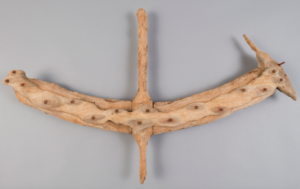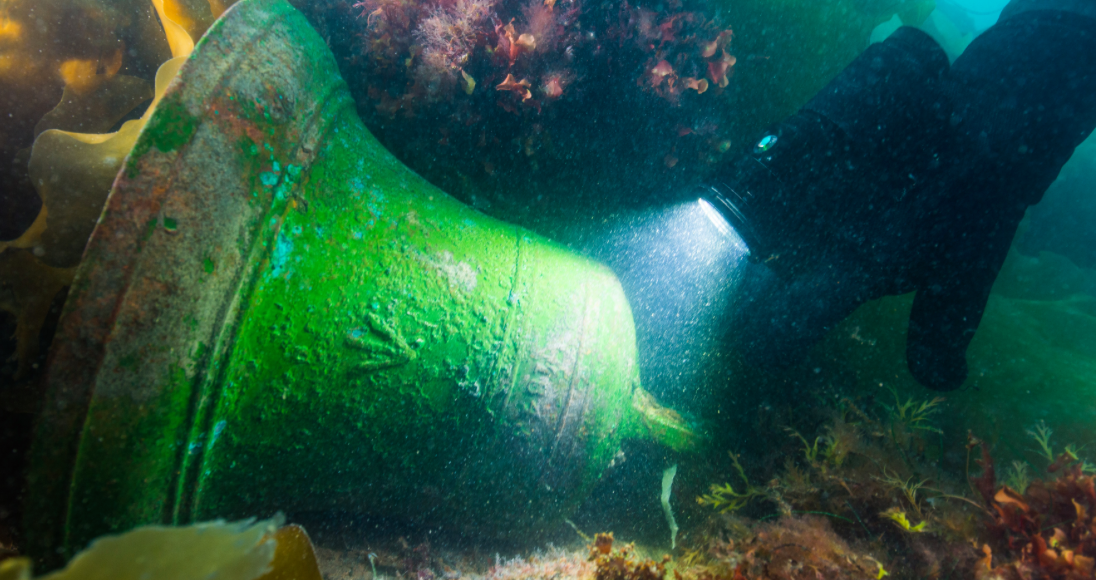These days, when one routinely makes a holiday of the planet’s most remote locations — Antarctica, the Galapagos, or a posh cruise through the Northwest Passage — it’s difficult to comprehend just how remarkable an adventure like Sir John Franklin’s really was.
Death in the Ice — The Mystery of the Franklin Expedition, now at the Canadian Museum of History, demonstrates what it was like in 1845 when Franklin set sail with 129 men and two ships, the HMS Erebus and Terror, to find that “coveted polar shortcut from the Atlantic to the Pacific . . . the key to an easier trade route between Europe and Asia.” All of this played well to Britain’s widespread enthusiasm for exploratory adventure in the 19th century.
“Explorer’s accounts, full of ice and exotic people and animals, inspired writers and artists,” says a wall panel in the exhibition. “They also formed the basis for exhibitions, public lectures and magic-lantern shows.”

A section of the wheel of HMS Erebus was found on the seafloor, approximately 30 metres from the wreck. Photo courtesy Parks Canada.
Franklin’s wasn’t the first expedition to the Northwest Passage. Much of the route had been charted by prior adventurers, including Martin Frobisher, who discovered the bay that bears his name, and Henry Hudson, whose bay is even bigger. Franklin’s goal was to chart the critical portion of the passage that would finally join the great oceans.
It all went horribly wrong, as the men and ships seemed to vanish into thin, frigid air, though their existence only grew in the British public’s imagination. The vanishing set off what some considered “the largest and most costly rescue mission in history.” Over the next few decades, more than 30 expeditions “sailed, steamed or sledged into the Arctic from the east, west and south. Very few found any trace of the expedition.”
A poster in the exhibition offers the princely sum of 20,000 pounds — perhaps more than two million pounds at today’s values — “to any party or parties, of any country, who shall render efficient assistance to the crews of the discovery ships of under the command of Sir John Franklin.”
An exhibition in 1850 found the site on Beechey Island where Franklin and his surviving crew spent the winter of 1845-46. But from there, where? “Franklin had once more disappeared.”

This carving depicts a type of multi-decked sailing ship common during the 1500s and 1600s. The style of the figure’s hat is similar to those worn by European sailors during the same period. The carving was collected from an archaeological site in Amadjuak Bay, on the southern coast of Baffin Island. Photo courtesy Canadian Museum of History
It was not until 2014 that an expedition mounted by the Canadian government discovered the wreck of the Erebus and, two years later, the Terror. And still, many questions about what happened to Franklin and his men, and how and why, remain unanswered.
Walking through the exhibition space, looking over artifacts that range from personal items to sizeable pieces of timber — the very skeletons of the doomed ships — it’s easy to imagine that the officers and ordinary men could not have fully appreciated the power of the land, the indifference and insurmountability of it, until they got there to experience it for themselves.
The more that 200 artifacts are from the collections of the Museum of History and Britain’s National Maritime Museum, augmented by research from Parks Canada and the Nunavut government. The old and new are intertwined in revealing fashion: a large video map of the north tracks the route of various expeditions over the centuries, and the land itself is revealed only as it’s discovered by those explorers, while another video screen tops the multi-purpose table in a scale-reproduction of the captain’s quarters on board.
There is much in the exhibition about the importance of Inuit knowledge and oral tradition in the Franklin story. From the earliest northern expeditions to the recent ventures that found the doomed ships, the input of indigenous people has been essential and irreplaceable. One wonders, if this exhibition were staged 20 years ago, would those Inuit people haven been given their due credit?
Death in the Ice continues to Sept. 30.






